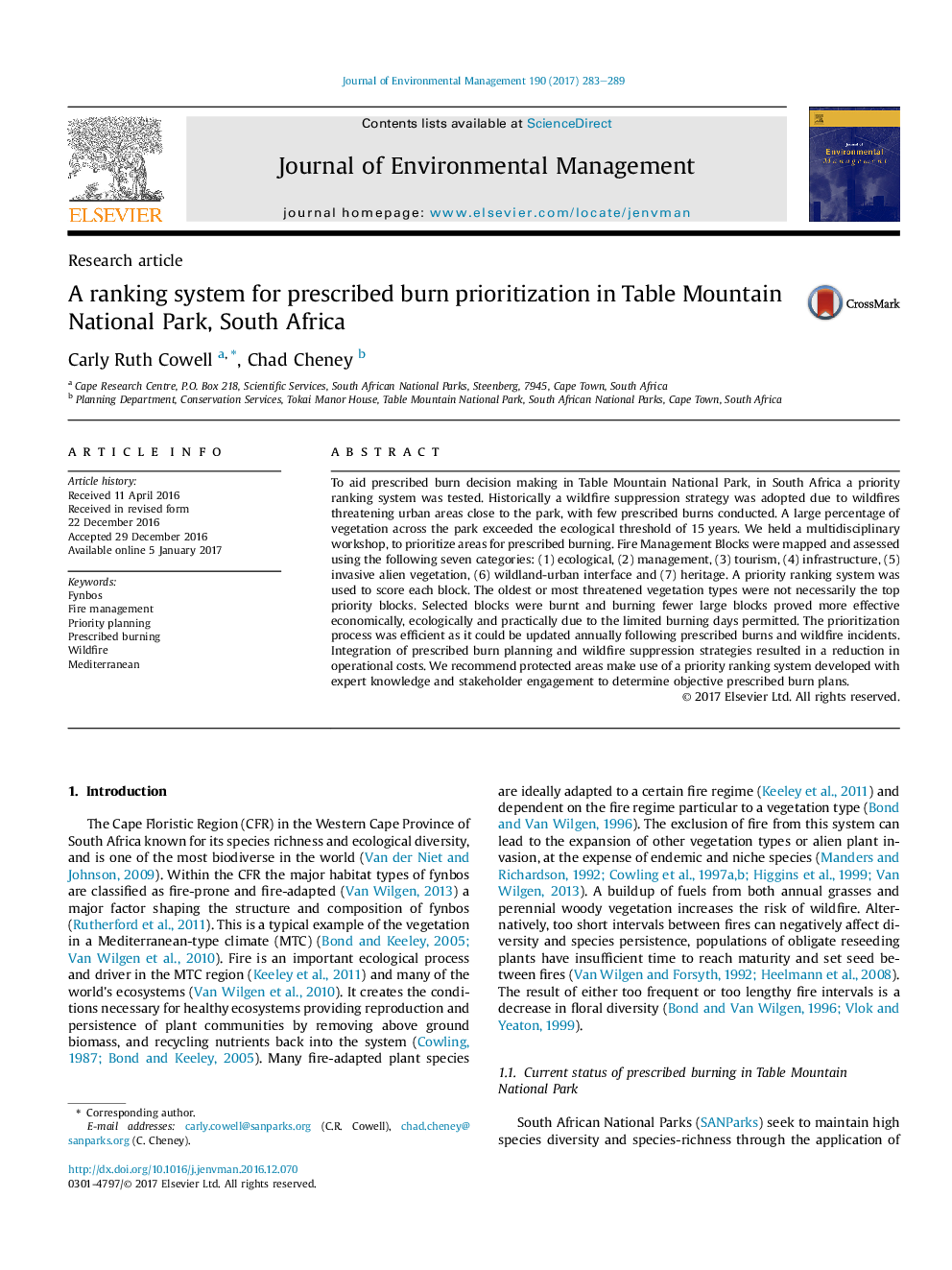| Article ID | Journal | Published Year | Pages | File Type |
|---|---|---|---|---|
| 5116907 | Journal of Environmental Management | 2017 | 7 Pages |
â¢Objective ranking system using multidisciplinary knowledge.â¢Inclusive stakeholder participation process.â¢Practical, flexible and dynamic process for environmental fire management.â¢Ensures no one single need dominates the use of resources for prescribed burning.
To aid prescribed burn decision making in Table Mountain National Park, in South Africa a priority ranking system was tested. Historically a wildfire suppression strategy was adopted due to wildfires threatening urban areas close to the park, with few prescribed burns conducted. A large percentage of vegetation across the park exceeded the ecological threshold of 15 years. We held a multidisciplinary workshop, to prioritize areas for prescribed burning. Fire Management Blocks were mapped and assessed using the following seven categories: (1) ecological, (2) management, (3) tourism, (4) infrastructure, (5) invasive alien vegetation, (6) wildland-urban interface and (7) heritage. A priority ranking system was used to score each block. The oldest or most threatened vegetation types were not necessarily the top priority blocks. Selected blocks were burnt and burning fewer large blocks proved more effective economically, ecologically and practically due to the limited burning days permitted. The prioritization process was efficient as it could be updated annually following prescribed burns and wildfire incidents. Integration of prescribed burn planning and wildfire suppression strategies resulted in a reduction in operational costs. We recommend protected areas make use of a priority ranking system developed with expert knowledge and stakeholder engagement to determine objective prescribed burn plans.
